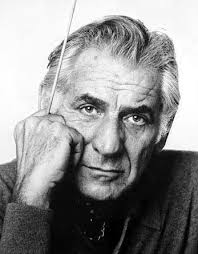What a polished, informative, delightful prelude to the 30 other events that shower the city of Tucson, AZ with Bernstein-mania over the next 18 days. How has Tucson elevated its winter allure of cashmere soft desert nights and clear warm days to include sophisticated musical offerings? In the Festival, there are fourteen artistic organizations (a herd of cats) focused on a common expression of America’s most versatile composer. Much like the organizational geniuses behind the Tucson Festival of Books (now third largest in the U.S.), the Artistic Steering Committee of the Tucson Desert Song Festival (only five years old) had a Eureka moment and sold it hard to the Bernstein Company in New York.
In the words of Festival President Jeannette J. Segel, "they met individually or collectively with the heads of nearly every top performing arts organization in Tucson, requesting, cajoling, practically bribing, and sometimes twisting arms to program Bernstein’s most seminal works." Around the core, they added jazz (2018 Tucson Jazz Festival is underway this week.), film, discussion groups, symposiums and a blockbuster festival was born.
Featured Performers from the University of Arizona
In Leonard Bernstein’s Two Worlds – From Broadway to Opera, Kristin Dauphinais Voice Professor at the University of Arizona Fred Fox School of Music, hosted four accomplished musicians: Kaitlin Bertenshaw, soprano, Brianna Bernhart, coloratura soprano, Matthew Osvog, baritone, Bonnie Bird, pianist. Misses Bertenshaw and Bernhart are students at the Fred Fox School of Music and Mr. Osvag at the School of Theater, Film and Television. Ms. Bird is a coach and accompanist with the Fred Fox School of Music.
As she opened the evening, Profession Dauphinais guided the listener to distinguish how in opera, the music is primary, the words are secondary. In musical theater, the words are primary; the music is secondary. That little bit of professorial directive, make each subsequent piece more relatable. Throughout the evening, the five cast members illustrated how Bernstein blended rhythm, tone, words, speaking, orchestration, religion, ethnicity—veritably the apotheosis of music from the United States.
Chronological Review of Bernstein's Works
The concise 65-minute program presented a mostly chronological review of Bernstein’s works. The tone for the evening was set with the operatic ditty, I Hate Music, a seven-minute delight that Ms. Bertenshaw effervesced.
Hard to believe that the artistic core behind On the Town were all under 30, and most around 25: Bernstein, Betty Comden and Adolph Green, based on an idea from Jerome Robbins. Osvog’s plaintive Gaby’s Coming and Barnhart’s bawdy I Can Cook captured the audience. The three “student performers” from the UofA could walk from the stage of Holtzclaw Hall into most professional performances.
Four More Performances Will Be Reviewed
Professor Dauphinais drew the evening to a close the selection of Simple Song the opening and conclusion to Bernstein’s Mass. Stand-alone, it seemed a Jewish prayer, addressed directly to God. How fitting that he should envelope the Catholic celebration of the Mass with the historical roots of the religion.
Over the next two and a half weeks, we will attend and review four Bernstein events: Candide presented by the Arizona Opera, Mass presented by True Concord Voices and Orchestra, “” Bernstein and Ballet presented by the Tucson Ballet, and Kaddish presented by Tucson Symphony Orchestra.
When:
Through February 4, 2018
Where:
Various Tucson locations
Tickets:
Some events are free, others have a charge. Please consult the Tuscon Desert Songfest website for locale and curtain time details.
About the Author:







